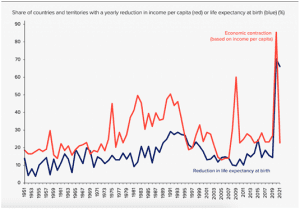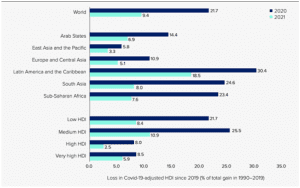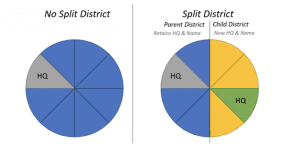THE INDIAN POLITY AND GOVERNANCE
1. MANDATORY REQUIREMENTS FOR PACKAGED COMMODITIES
THE CONTEXT: The Department of Consumer Affairs, Legal Metrology Division has notified a draft amendment to the Legal Metrology (Packaged Commodities) Rules 2011.
THE EXPLANATION:
• The mandatory provisions under the rules
1. It is mandatory under the Legal Metrology (Packaged Commodities) Rules, 2011 to ensure a number of declarations, such as:
2. the name and address of the manufacturer/packer/importer,
3. the country of origin,
4. the common or generic name of the commodity,
5. the net quantity,
6. the month and year of manufacture,
7. the Maximum Retail Price (MRP)
8. consumer care information.
9. All pre packaged commodities should also be inspected.
• The rules says that the principal display panel means the total surface area of a package containing the information required in accordance with these rules
• the pre-printed information could be grouped together and given in one place and the online information in another place.
• The rules provides that the declaration on the package must be legible and prominent.
• The consumers’ ‘right to be informed’ is violated when important declarations are not prominently displayed on the package.
• If there is more than one major product the rules states that the name or number of each product shall be mentioned on the package.
• This sub-rule is not applicable to mechanical or electrical commodities.
Need for the amendments:
• It is common for consumers to assume that brands’ claims are accurate, but such claims are usually misleading.
• The front side of the package must contain the percentage of the composition of the unique selling proposition (USP).
• A USP also known as a unique selling point, is a marketing strategy designed to inform customers about the superiority of one’s own brand or product.
• Listing the USP of a product on the front of the package without disclosing its composition percentage violates consumer rights.
• Also, packages displaying key constituents must display a percentage of the content used to make the product.
• For example, if a brand sells aloe vera moisturiser or almond milk/biscuits, then the maximum percentage of the product should be aloe vera and almond, otherwise, the product name is misleading.
The proposed amendments
• The proposed amendments suggest that at least two prime components should be declared on the package’s front side along with the brand name.
• Currently, manufacturers list the ingredients and nutritional information only on the back of the packaging.
• This declaration must also include the percentage/quantity of the USPs of the product in the same font size as the declaration of the USPs.
• Mechanical or electrical commodities are excluded from this.
• When this new provision is added, consumers will not be misled by the fake claims of manufacturers relating to the content in blended foods and cosmetics.
2. COMMITTEE TO DRAFT NATIONAL COOPERATION POLICY
THE CONTEXT: Union Home and Cooperation Minister recently announced the formation of a committee to draft a National Cooperation Policy document.
THE EXPLANATION:
• The 47-member committee will be headed by former Union Minister Suresh Prabhu. The committee also includes experts from the cooperative sector; Representatives of National/State/District and Primary Co-operative Societies; Secretaries (Cooperatives) and Registrars of Co-operative Societies of the States/UTs; and officers of Central Ministries/Departments.
• This policy is being prepared to realize the government’s vision of ‘Sahakar Se Prosperity’. Earlier the current National Policy on Cooperation was formulated in 2002.
• This Cooperative Policy Document is being prepared with a view to fulfill the mandate given to the new Ministry of Cooperation, which includes strengthening the cooperative movement in the country, deepening its reach at the grassroots level and promoting a cooperative based economic development model.
Co-operative Societies in India
There are about 8.5 lakh cooperative societies in India, with a member base of about 29 crores. These cooperatives are engaged in various activities like agro-processing, dairying, fisheries, housing, weaving, credit and marketing.
Ministry of Cooperation
The Ministry of Cooperatives has been constituted with the objective of providing a separate administrative, legal and policy framework to strengthen the cooperative movement in India. This ministry will work towards realizing the vision of ‘Sahakar Se Samridhi’ (Prosperity through Cooperation). Simultaneously, it will work to streamline processes for ease of doing business for cooperatives and enable the development of multi-state cooperatives.
THE INTERNATIONAL RELATIONS
3. MAITREE SUPER THERMAL POWER PROJECT
THE CONTEXT: Prime Minister and Bangladesh Prime Minister Sheikh Hasina recently unveiled Unit-1 of Maitree Super Thermal Power Project.
THE EXPLANATION:
• It is located at Rampal in Bagerhat district of Khulna division of Bangladesh.
• The 1320 (2×660) MW coal-fired power plant is being set up at a cost of approximately $2 billion.
• The project is being developed under India’s concessional financing scheme and will add 1320 MW to Bangladesh’s national grid.
• It is being built by Bharat Heavy Electricals Limited (BHEL) for Bangladesh-India Friendship Power Company Private Limited (BIFPCL).
• The first unit of this super thermal power plant will go into commercial operation in early October and will be a major breakthrough in the growing cooperation in the Bangladesh-India power sector.
• Unit-II of the power plant, also known as the Rampal coal-fired power project, is expected to be commissioned early next year.
Once both the units of this mega power plant are commissioned, Maitree Super Thermal Power Project will be one of the largest power plants in Bangladesh.
Agreements signed between the two countries –
• Seven agreements related to water resources, railways, science and technology and space technology etc. have been signed during India-Bangladesh bilateral talks.
• During the bilateral talks, an agreement was signed between Prasar Bharati and Bangladesh Television to enhance cooperation in the broadcasting sector.
• An important agreement was also signed on the sharing of the waters of the Kushiyara River to benefit the Sylhet region of Bangladesh and the southern Assam region of India.
THE ECONOMIC DEVELOPMENTS
4. STATUS REPORT ON INDIA’S EXTERNAL DEBT 2021-22
THE CONTEXT: The External Debt Management Unit (EDMU), Department of Economic Affairs, Ministry of Finance, recently released the 28th edition of the Status Report on India’s External Debt 2021-22.
THE EXPLANATION:
• Long term debt: USD 499.1 billion constituted the largest chunk of 80.4 per cent of total
• Short-term debt: USD 121.7 billion accounted for 19.6 per cent of total
• NRI deposits: Declined by 2 per cent to USD 139.0 billion
• Non-sovereign debt: Grew 6.1 per cent to USD 490.0 billion over the level as of end-March 2021
• Non-sovereign external debt: Estimated at USD 490.0 billion as at end-March 2022
• Sovereign debt: USD 130.7 billion rose higher by 17.1 per cent over its level a year ago
• Debt service ratio: It fell significantly to 5.2 per cent during 2021-22 from 8.2 per cent in the previous year.
• SDRs: Rose to US 5.5 billion as at end-March 2021
• Commercial borrowings, NRI deposits and short-term trade credit are the three biggest constituents of the non-sovereign debt, accounting for as much as 95.2 per cent.
• Short-term trade credit increased by 20.7 per cent to US$117.4 billion at the end of March 2022, thanks to a significant increase in imports during 2021-22.
• In a cross-country perspective, India’s external debt is modest, ranking 23rd globally.
• India’s stability in terms of different credit vulnerability indicators was better than that of low and middle income countries (LMICs) as a group and even better than many of them individually.
VALUE ADDITION:
What are Special Drawing Right (SDR)?
• This is a kind of reserve of foreign exchange assets comprising leading currencies globally and was created by the International Monetary Fund in the year 1969.
• SDR is often regarded as a ‘basket of national currencies’ comprising major currencies of the world – the US dollar, Euro, British Pound, Yen (Japan) & the Chinese renminbi (included in 2016).
• The composition of this basket of currencies is reviewed every five years wherein the weightage of currencies sometimes gets altered.
• SDR can be freely exchanged between the member countries instead of relying on the currency of any one particular country.
5. MOODY’S RETAINS INDIA’S BAA3 RATING WITH STABLE OUTLOOK
THE CONTEXT: Moody’s Investors Service recently announced its decision to maintain India’s sovereign credit rating at a minimum investment grade of ‘Baa3’ and continue with its “stable” outlook on the country.
THE EXPLANATION:
• According to Moody’s, India’s economic growth rate in the current financial year will be 7.6 percent as compared to 8.7 percent in the previous financial year 2021-22. At the same time, the growth rate of GDP (Gross Domestic Product) is estimated to be 6.3 percent in 2023-24.
• According to Moody’s, right now India’s biggest challenges include things like low per capita income, rising government debt, low debt capacity and limited government effectiveness.
• Also, rising challenges to the global economy, including the Russo-Ukraine war, high inflation and a hike in policy rates by central banks, will adversely affect the ongoing recovery in India in the financial years 2022-23 and 2023-24.
• Moody’s said that if India’s economic growth is faster than expected, then it may increase the rating further. This can happen only after implementing economic and financial sector reforms.
• The rating agency expects the quality of the Indian banking system to improve further as the economy emerges out of the pandemic. As this improves, conditions will be favorable for banks and this will strengthen business confidence.
About Moody’s Investors Service
Moody’s Investors Service, often referred to simply as Moody’s, is the bond credit rating business of Moody’s Corporation. This organization provides financial research globally on bonds issued by government and commercial organizations. Moody’s, along with Fitch Group and Standard & Poor’s, are considered the big three credit rating agencies. Its headquarter is in New York.
THE GOVERNMENT SCHEMES IN NEWS
6. SETU – SUPPORTING ENTREPRENEURS IN TRANSFORMATION AND UPSKILLING PROGRAMME
THE CONTEXT: The Minister of Commerce and Industry launched the US Startup SETU – Supporting Entrepreneurs in Transformation and Upskilling programme in the Bay Area of San Francisco.
THE EXPLANATION:
What is SETU?
SETU or Supporting Entrepreneurs in Transformation and Upskilling is an Indian government initiative to help budding entrepreneurs and start-up in India to US-based investors and start-up ecosystem leaders with mentorship and assistance in various areas.
Aim of SETU:
SETU is designed to break the geographical barriers between mentors based in US that are willing to invest in entrepreneurship and sunrise startups in India.
MAARG
The interaction will be supported through the mentorship portal under the Startup India initiative MAARG, or the Mentorship, Advisory, Assistance, Resilience, and Growth program, which is a single-stop solution finder for startups in India.
The core functions of MAARG are:
• to improve ease of access,
• use Artificial Intelligence for Matchmaking,
• schedule meetings virtually,
• host masterclasses,
• provide a custom dashboard for relevant information, analytics, features, etc.,
• host cohort-based programs that will allow startup ecosystem enablers to become a part of the program
• enable outcome driven activities.
THE PRELIMS PERSPECTIVE
7. THREE INDIAN CITIES IN UNESCO NETWORK OF LEARNING CITIES
THE CONTEXT: Recently, three cities in India have joined the UNESCO Global Network of Learning Cities. These include two cities Thrissur and Nilambur in Kerala and Warangal in Telangana.
THE EXPLANATION:
• Warangal is the second UNESCO recognition for Telangana. Earlier, Ramappa Temple in Mulugu district was included in the list of UNESCO World Heritage Sites.
• This time, Ukraine’s capital Kyiv, South African city Durban and UAE city Sharjah have been included in this list of UNESCO Global Network of Learning Cities.
• In the year 2022, 77 cities from 44 countries of the world including India have been included in this list.
• The inclusion of these cities will encourage exchange of ideas with other cities and share among themselves the methods of systems already implemented in these cities.
• Nilambur (Kerala)
• Nilambur is a famous eco-tourism destination in Kerala. Majority of the population here is dependent on agriculture and allied industries.
With Nilambur included in this list, sustainable development through community ownership, gender equality, inclusivity will be further promoted. As well as creating employment opportunities in the city and achieving the goals of the United Nations Sustainable Development Goals (SDGs).
Thrissur (Kerala):
Thrissur, an important center of academic and research institutions, is considered the cultural capital of Kerala. It is also known as gold art and jewelery industry in particular. By being included in this UNESCO list, Thrissur will benefit the world with its intellectual, educational and jewelery arts and will itself benefit from cultural inclusion.
Warangal:
Warangal is a city with rich cultural heritage of Telangana. It is a major tourist destination of the state. More than 32 lakh tourists visit here every year. The economy of Warangal mainly depends on agricultural and industrial centres. The development of this city will further accelerate after it is included in the UNESCO Global Network of Learning Cities.
UNESCO Global Network of Learning Cities:
• Launched in 2013, the UNESCO Global Network of Learning Cities (GNLC) is an international policy based network. It aims to ensure the development of all learning cities by sharing ideas and arts with other cities. So far, 294 cities from 76 countries are included in this list.
• The network supports the achievements of all 17 Sustainable Development Goals (SDGs), but primarily focused on SDG 4 (‘Ensuring inclusive and equitable quality education and promoting lifelong learning opportunities for all) and SDG 11 (making human habitats sustainable, inclusive, safe).
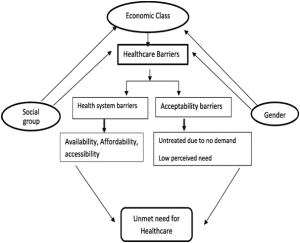
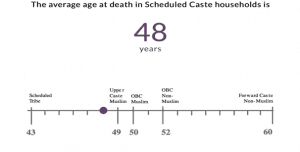
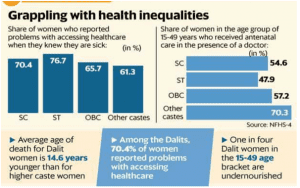
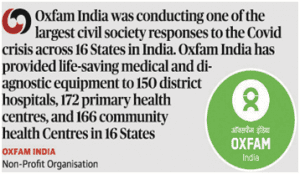 Oxfam India Delhi office from the 7th September 2022 noon to early hours of 9th September.
Oxfam India Delhi office from the 7th September 2022 noon to early hours of 9th September.

